#Bond Meets Bambi and Thumper
Explore tagged Tumblr posts
Video
youtube
“Bond Meets Bambi And Thumper” de John Barry, de la película “Los diamantes son eternos” (1971).
3 notes
·
View notes
Text
LUCY & BEDROCK! (TWIST! TWIST!)
Lucille Ball & “The Flintstones”
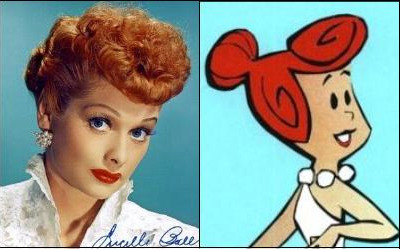
“The Flintstones” was TV’s first primetime animated sitcom. It was produced by Hannah-Barbara animation and ran on ABC TV from 1960 to 1966. Following the show's cancellation, a film called The Man Called Flintstone, a musical spy caper that parodied James Bond, was released that same year. The show was revived in the early 1970s and several different series and made-for-TV movies. The original show also was adapted into a live-action film in 1994, and a prequel, The Flintstones in Viva Rock Vegas, which followed in 2000.
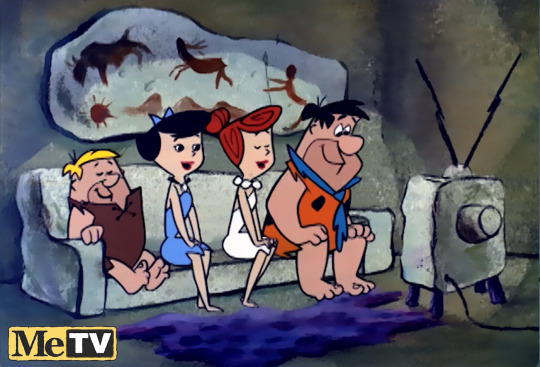
Although not officially recognized by its creators, the show bears a very strong resemblance to TV’s “The Honeymooners”. Fred and Wilma Flintstone are reminiscent of Ralph and Alice Kramden, and they have best friends and neighbors Betty and Barney Rubble that are very similar to Ed and Trixie Norton. The original “Honeymooners” (1955-56) also was spun-off into future iterations, including musical episodes, just like “The Flintstones.”

Lucille Ball admired “Honeymooners” creator and Jackie Gleason and Gleason even played Ralph Kramden on “Here’s Lucy.” Ball also worked with the show’s other stars: Art Carney (in “Happy Anniversary and Goodbye” and “What Now Catherine Curtis”), Audrey Meadows (in “Mother of the Bride” on “Life With Lucy”) and even Jane Kean, who played Trixie in the color “Honeymooners” (who was seen on a 1966 episode of “The Lucy Show”).
CAST CONNECTIONS

Jean Vander Pyl (Wilma Flintstone / Pebbles) worked with Lucille Ball on several episodes of “My Favorite Husband” radio show in 1948.
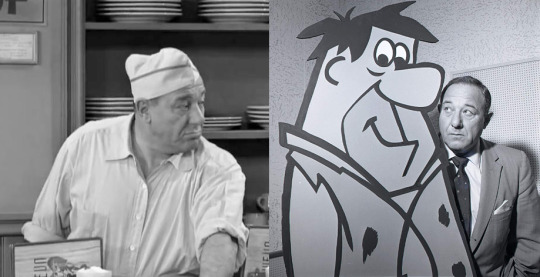
Alan Reed (Fred Flintstone) played a train station luncheon counter attendant in “Lucy Visits The White House” (TLS S1;E23) in 1963, while also playing Fred Flintstone on ABC. He later appeared on an episode of Desi Arnaz’s “Mothers-in-Law”.
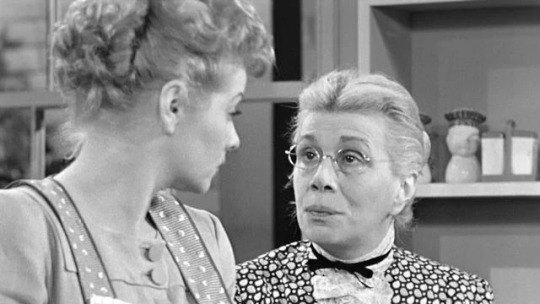
Bea Benadaret (Betty Rubble) was one of Lucille Ball’s favorite performers. She played Iris Atterbury on “My Favorite Husband” and was Ball’s first choice to play Ethel Mertz. Instead, she played Miss Lewis in “Lucy Plays Cupid” (ILL S1;E15).
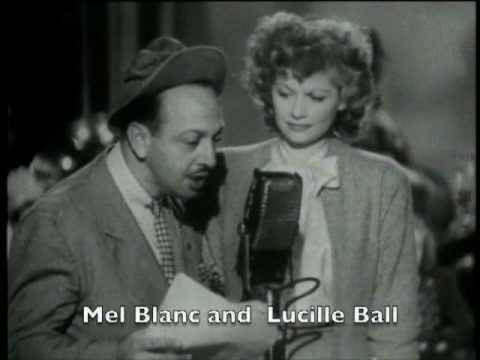
Mel Blanc (Barney Rubble) was a master of voices best known for Bugs Bunny. He also worked extensively with Jack Benny, once with Lucille Ball. He did two films with Lucille Ball: The Fuller Brush Girl (1950) and G.I. Journal (1944). In 1969, Blanc did some ADR (dialogue replacement) work on “Here’s Lucy.”
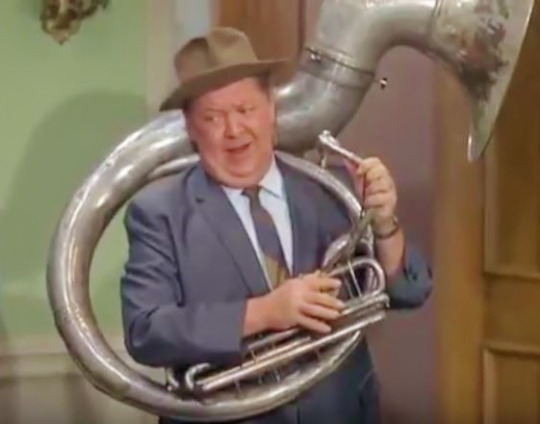
Hal Smith (Various Voices) is probably best known as Otis the Drunk on “The Andy Griffith Show”. He appeared with Lucille Ball in the 1963 film Critic’s Choice and did three episodes of “The Lucy Show” and one of “Here’s Lucy.”
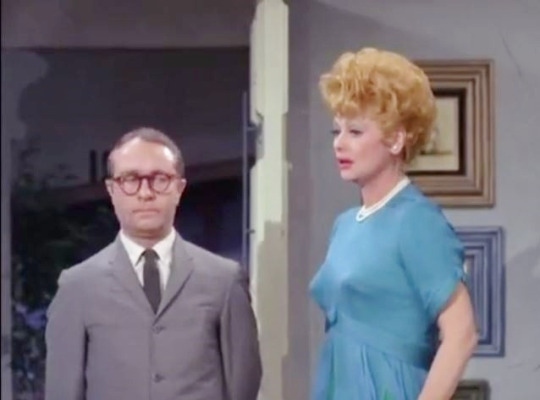
Howard Morris (Various Voices) played Howard Coe in “Lucy and the Golden Greek” (TLS S4;E2) in 1965.

Allan Melvin (Various Voices) is best remembered as Sam the Butcher on “The Brady Bunch” and Barney Hefner on “All in the Family.” In 1956, as Corporal Henshaw on “Sergeant Bilko,” he did was seen with Ball in “Bilko’s Ape Man.” Melvin and Ball also appeared together on the 8th Anniversary of “The Ed Sullivan Show” In 1954.

Harvey Korman (The Great Gazzoo / Various Voices) is best remembered for his work with Carol Burnett on “The Carol Burnett Show”, several times with Lucille Ball. He also appeared on “The Lucy Show” three times.
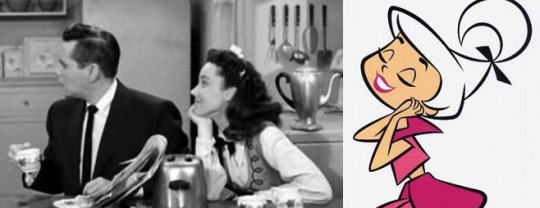
Janet Waldo (Mrs. Slaghoople / Hedda Rocker / Various Voices) is best remembered for voicing Judy Jetson on another Hanna-Barbera cartoon series, “The Jetsons” (1962-87). She played Peggy “Keep Jiggling” Dawson on “I Love Lucy” and Lucy Carmichael’s sister Marge on “The Lucy Show.”

Frank Nelson (Rockbind / Rocky Stone / Various Clerks) did two recurring characters on “I Love Lucy” - Freddie Fiillmore and Ralph Ramsey, in addition to other characters. His distinctive voice was heard on “My Favorite Husband” and he made one appearance, as the harried train conductor, on “The Lucy Show.”
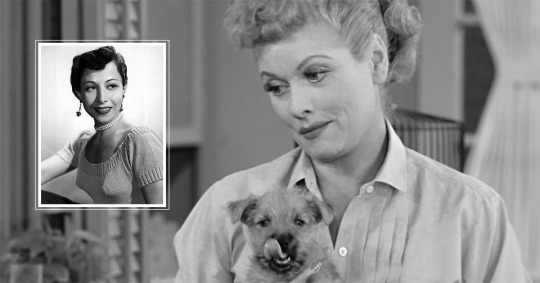
June Foray (Granny / Nurses) was one of the most famous voice artists in Hollywood, most famous for Rocket J. Squirrel. Coincidentally, Warner Brothers recruited Foray to replace Bea Benadaret as Granny in their cartoons. On “I Love Lucy” she provided the bark of Fred the dog.
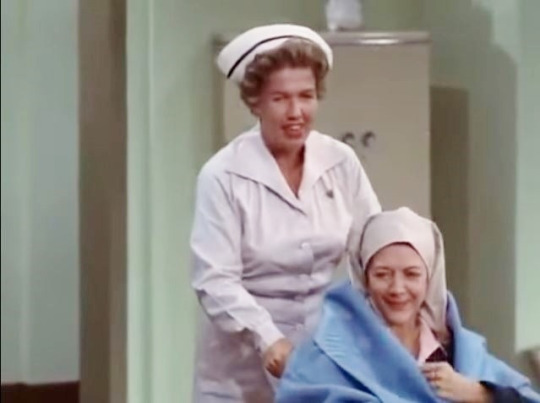
Paula Winslowe (Mrs. Slate / Various Voices) played Mrs. Martha Conklin on “Our Miss Brooks” opposite Gale Gordon. On “I Love Lucy” she was one of the passengers on the S.S. Constitution in “Second Honeymoon” (ILL S5;E14) and a patient (in wheelchair, above) in “Lucy Plays Florence Nightingale” (TLS S2;E14). She was the voice of Bambi’s mother in the 1942 Disney film Bambi.
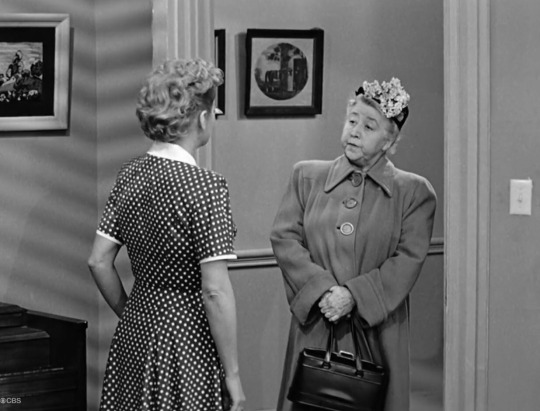
Verna Felton (Pearl Slaghoople) received two Emmy nominations for her role in the Desilu series “December Bride,” playing Hilda Crocker from 1955 to 1959. She did two episodes of “I Love Lucy,” including playing Lucy’s stern maid, Mrs. Porter. Felton voiced many characters for Disney.

Howard McNear (Doctor) played Mr. Crawford, Little Ricky’s music teacher on “I Love Lucy.” McNear went on to play Floyd the Barber on “The Andy Griffith Show” from 1961 to 1967, filmed on the Desilu backlot. He was also seen in Lucy and Desi’s 1953 film The Long, Long Trailer.
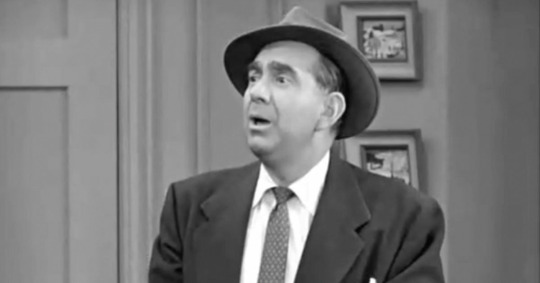
Herb Vigran (Cop) was one of the busiest character actors in Hollywood. He played Jule, Ricky Ricardo’s music agent on two episodes of “I Love Lucy” in addition to playing movie publicist Hal Sparks in “Lucy is Envious” (ILL S3;23). He was seen in the Lucy-Desi film The Long, Long Trailer and six episodes of “The Lucy Show” - all as doctors!
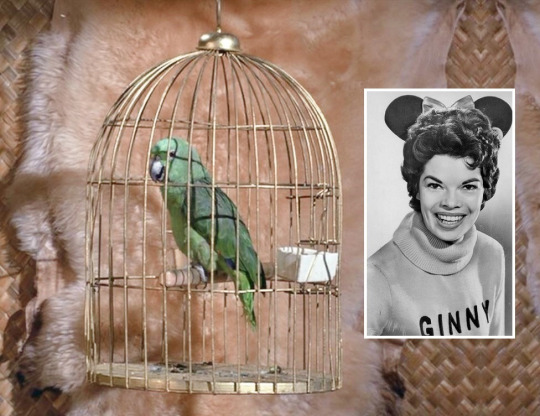
Ginny Tyler (Daisy) voiced Clementine the sheep in “Lucy Buys a Sheep” (TLS S1;E5) and the bird voices in “Lucy Gets the Bird” (TLS S3;E12) and one episode of “Here’s Lucy.” She did the voice of the sheep in Disney’s 1964 hit Mary Poppins. Although she died in 2012, her voice can still be heard in the chorus of birds outside The Enchanted Tiki Room at Disneyland and Walt Disney World.
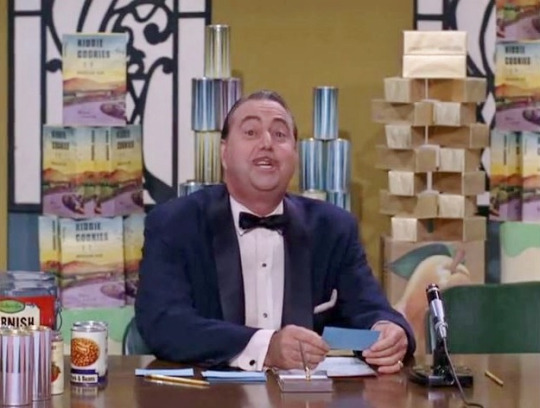
Willard Waterman (Gus Gravel) was a versatile voice actor who appeared on hundreds of radio shows in the 1930s and 40s. He is probably best remembered for playing “The Great Gildersleeve” on both radio and TV. He was seen on “The Lucy Show” in “Lucy and The Plumber” (above) and “Lucy the Rain Goddess” (S4;E15).
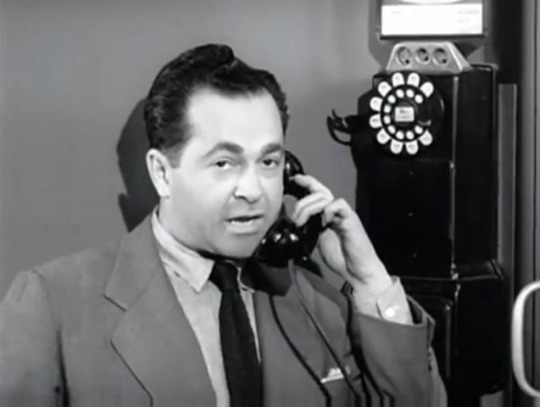
Jerry Hausner (Clyde) was best remembered for playing Jerry, Ricky’s agent on “I Love Lucy” (including the pilot). He also did one appearance on “The Lucy Show.”
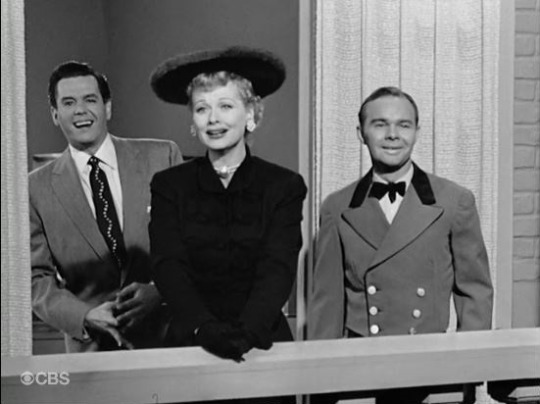
Sam Edwards (Agent) played the star-struck bellboy in “Lucy Meets the Queen” (ILL S5;E15). He was also the voice of the adult Thumper in Bambi (1942).

Sandra Gould (Various Voices) was best remembered as Gladys Kravitz on “Bewitched”. She made two appearances on “I Love Lucy” and one (above) on “The Lucy Show.”
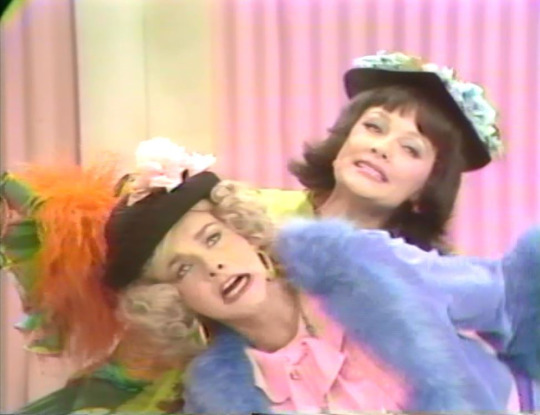
Ann-Margret (Ann Margrock) was one of several celebrity guest stars to be honored with character on “The Flintstones”. She was also a guest star (as herself) on “Here’s Lucy” in 1970 and had appeared on Ann-Margret’s 1969 special.

Elizabeth Taylor (Pearl Slaghoople in The Flintstones live action film, 1994) was one of Hollywood’s most glamorous and popular stars when she guest starred with husband Richard Burton on “Here’s Lucy” in 1970. It is odd, then, that she was cast as Pearl Slaghoople, a character that was previously considered frumpy.
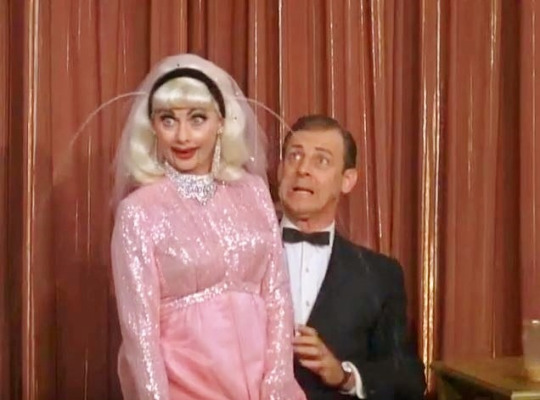
Paul Winchell (Umpire / Thief / Reporter in "Wind Up Wilma” - 1981) was best known as a ventriloquist, but he was also an accomplished character actor who appeared in two episodes of “The Lucy Show” and two of “Here’s Lucy.”
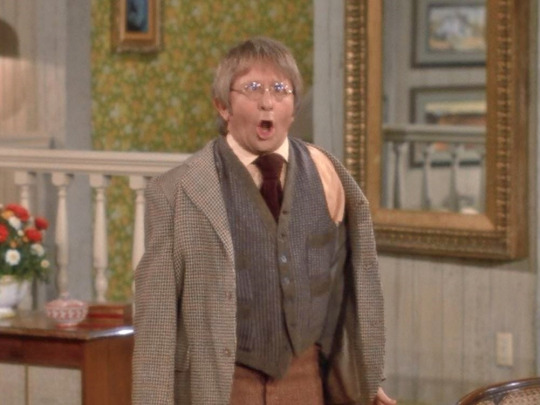
Arte Johnson (”Flintstone Kids” - 1989) was best known as a cast member on “Rowan and Martin’s Laugh-In”. He also did an episode of “Here’s Lucy” as an eccentric bird watcher.
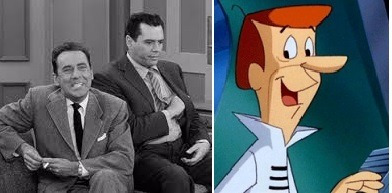
George O’Hanlon (”Flintstone Kids” - 1989) was best remembered as the voice of George Jetson on “The Jetsons,” another hit Hanna-Barbera cartoon. On “I Love Lucy” he was one of two actors to play Charlie Appleby.
"I Love Lucy” and “The Flintstones”

First, Lucille Ball bears more than a passing physical resemblance to Wilma Flintstone. In “The Flintstones” it is clear that Fred is the leading character and most stories revolve around Fred and Barney, rather than Lucy and Ethel. The tried and true formula of a leading couple and the best friends / neighbors as the secondary characters is used in “I Love Lucy”, “The Honeymooners” and “The Flintstones”.
Here are a few more tangible connections:
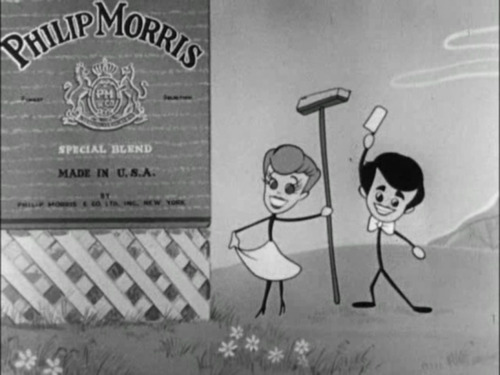
The animated Lucy and Desi that opened pre-syndication airings of “I Love Lucy” were created by the Hanna-Barbera unit at MGM.
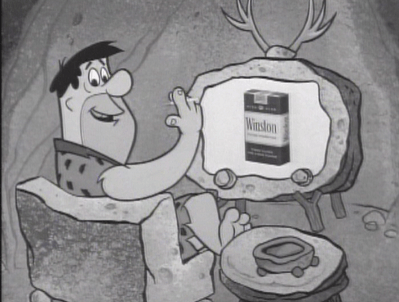
And both shows were sponsored by cigarette companies; “I Love Lucy” by Philip Morris and “The Flintstones” by Winston.
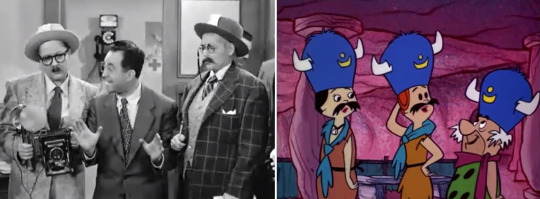
Wilma and Betty trying to sneak into the Water Buffalo convention in "Ladies Night at the Lodge" (1964) while disguised as men was very close to Lucy and Ethel disguising themselves as male reporters to infiltrate Ricky’s daddy shower in “Ricky Has Labor Pains” (1953).
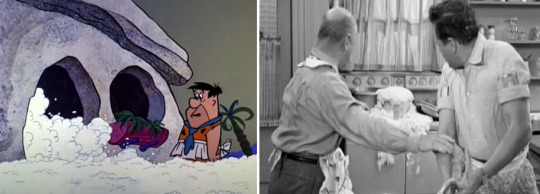
The plot of “Operation Switchover” (1964) recycles the premise and many of the same plot elements of “Job Switching” (1952) especially with the domestic disasters on Ricky and Fred's end: scorched clothes while ironing, a fallen cake, and overflowing rice on the stove.
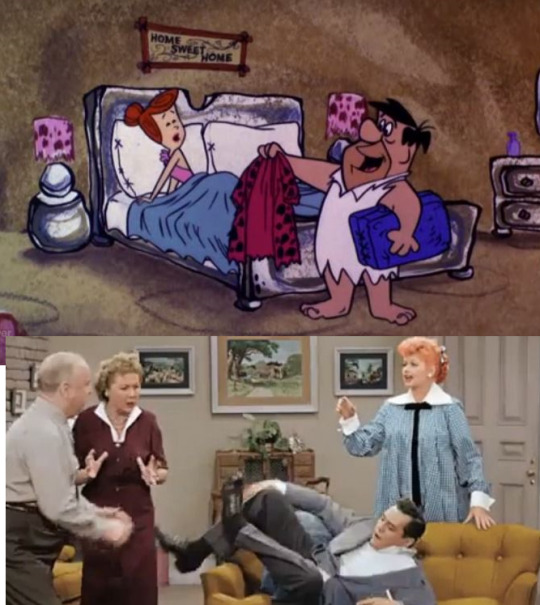
Like Lucy Ricardo, Wilma Flintstone’s pregnancy was incorporated into the storyline. It was originally thought that like Lucy, Wilma would have a boy, but merchandisers pointed out that there were more opportunities for products for girls, so Pebbles was born. Like Lucille Ball, Jean Vander Pyl (who voiced Wilma) was pregnant at the time of recording and gave birth to her son on the day "The Blessed Event" originally aired on February 22, 1963.
Fred and Barney undertake a rehearsal for the big moment, including Betty rehearsing telephoning the doctor, just like Ricky and the Mertz’s do for Lucy when ‘the time has come’.
Wilma seems to get cravings for unusual foods including hot fudge and sardines that Fred dutifully supplies, just like Ricky did for Lucy.
In the father’s waiting room, a man worries his wife might deliver more than one baby, just like Mr. Stanley (Charles Lane) on “I Love Lucy.”
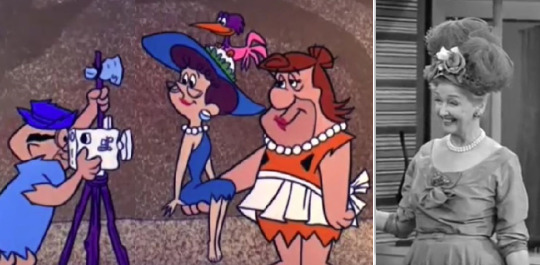
In “Operation Switchover” a character named Hedda Rocker from Good Cavekeeping Magazine is obviously inspired by Hedda Hopper, the famous gossip columnist who appeared on two episodes of “I Love Lucy” as herself.
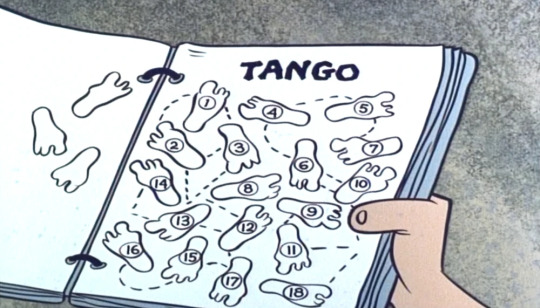
Arthur Murray, who’s innovate dance instruction method and dance studios became iconic, is parodied on “The Flintstones” as Arthur Quarry. In a 1965 episode, he was named Arthury Murrayrock.
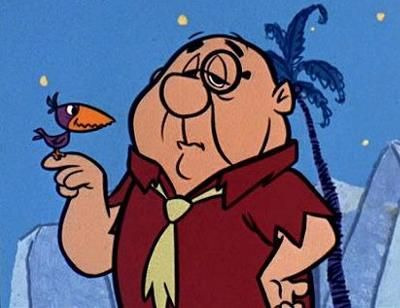
In “Lucy Meets the Mustache” (LDCH S3;E3) Lucy wants to open a sealed letter so she tries a inserting a knitting needle under the flap, a method she says she saw in an Alfred Hitchcock movie. The scene is underscored with “Funeral March of a Marionette” by Charles Gounod, which served as the theme tune of “Alfred Hitchcock Presents”. On “The Flintstones” he is parodied as Alvin Brickrock.
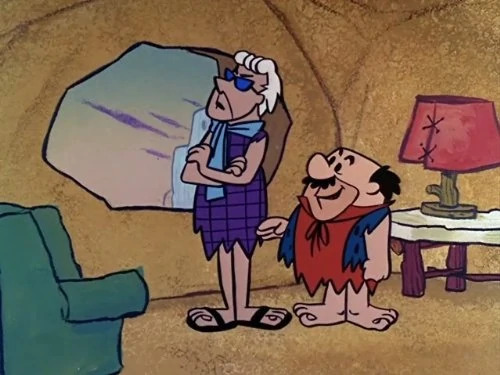
Hollyrock star Rock Quarry is a tribute to Rock Hudson, but talks like Gary Cooper. Hudson guest-starred on an episode of “I Love Lucy” set in Palm Springs. Previously, Lucy dressed as Gary Cooper (complete with his trademark ‘yup’) to fool near-sighted Caroline Appleby.
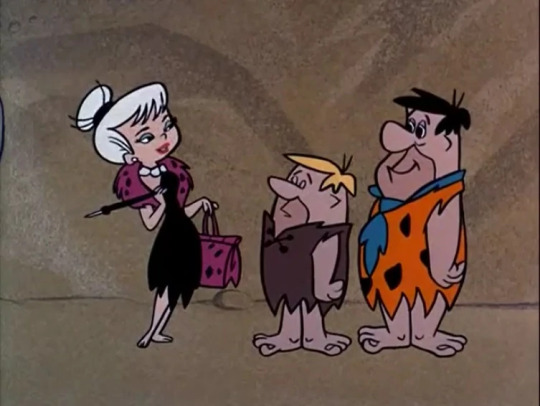
An episode titled “The Soft Touchables” is modeled after Desilu’s hit gangster series “The Untouchables.” “The Lucy Show” parodied their own show in an episode titled “Lucy The Gun Moll” (TLS S4;E25) in 1966 starring “The Untouchables Cast” but using different character names.
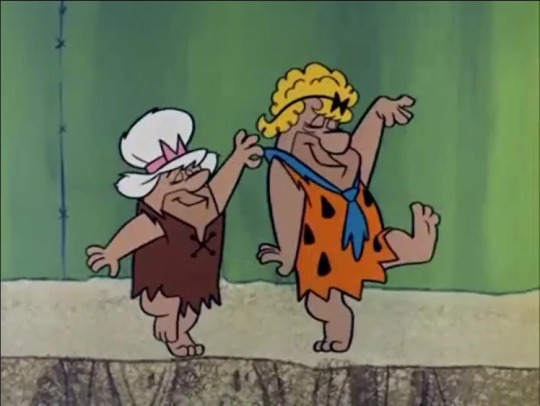
Wilma and Betty’s favorite television show “Peek-A-Boo Camera” catches Fred and Barney acting silly in a 1963 episode that is clearly modeled after TV’s “Candid Camera” created by Allen Funt. In 1971, “Lucy and the Candid Camera” (HL S4;E14) also featured Funt in hidden camera shot plot. Lucy Carmichael also get involved in a hidden camera television show in “Lucy and the Beauty Doctor” (TLS S3;E24). In that show, the program was called “The Boiling Point.”
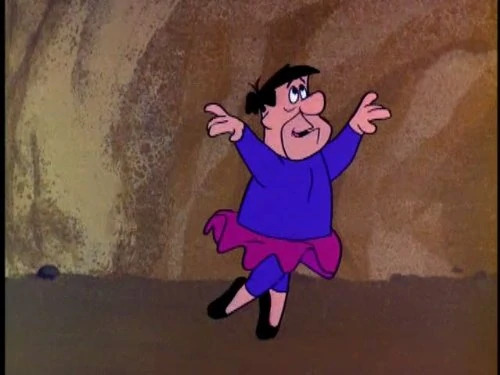
The hit Broadway and movie musical movie My Fair Lady inspired many satires (some in name only) including “My Fair Freddy” (1966) and “My Fair Lucy” (TLS S3;E20) in 1965!
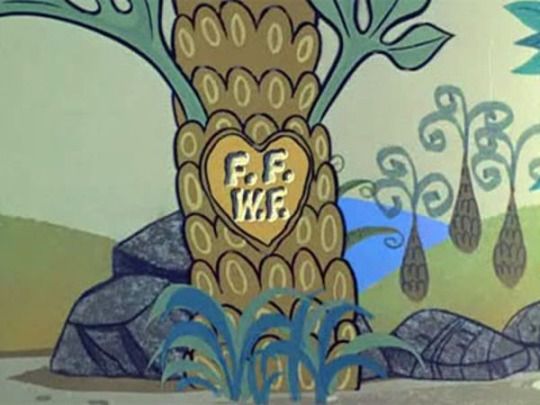
In “Fred Flintstone Woos Again” (1961) Wilma convinces Fred to renew their wedding vows after realizing the official who originally married them wasn’t fully licensed! On “I Love Lucy” Lucy realized that their wedding was also invalid when she found an error on their license. They go to the spot they first wed to renew their vows, just like “The Flintstones”.
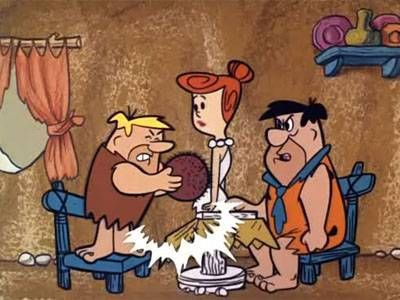
In “Dial ‘S’ for Suspicion” (1962) Wilma's devotion to a murder mystery novel causes Fred to wonder if Wilma is trying to away with him. In “Lucy Thinks Ricky Is Trying To Do Away With Her” (ILL S1;E4) Lucy's devotion to a murder mystery novel causes her to wonder if Ricky is trying to do away with her!
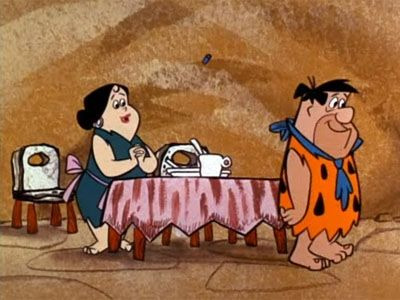
When Wilma can’t keep up with the housework, she hires a maid in “Wilma the Maid” (1963). The same situation happened in the Ricardo home in “Lucy Hires a Maid” (ILL S2;E23). While the Flintstone’s maid is an earthy Italian woman named Rockabrigida, the Ricardo’s maid is a humorless woman named Mrs. Porter. Coincidentally, Mrs. Porter was played by Verna Felton, who voices Pearl Slaghoople on “The Flintstones”.

When superhero “Superstone” is hired for a birthday party but can’t make it - Fred takes his place. On “I Love Lucy” when Superman is promised for Little Ricky’s party, but can’t make it, Lucy takes his place - nearly!
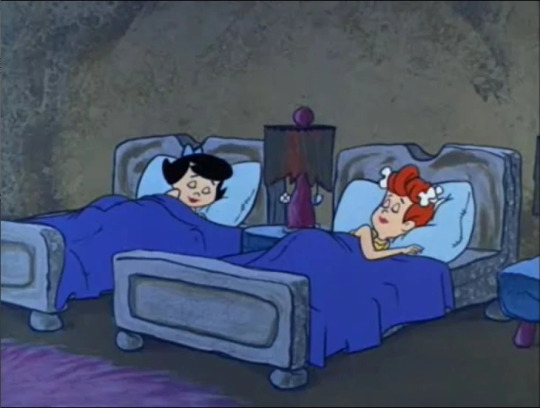
In “How To Pick A Fight With Your Wife” (1966) spats between spouses escalate to such a degree that the couples split: Fred and Barney are thrown together as roommates, while Wilma and Betty are bunking together at the other house. In “Vacation from Marriage” (ILL S2;E6) much the same thing occurs between the Ricardos and the Mertzes!

The real comparison with Lucy and Desi is something Joe Barbera could have only hoped for in 1960 — enduring popularity. Lucy is still justifiably loved by hoards of fans and “I Love Lucy” is on the air somewhere. “The Flintstones” remains a part of the popular culture, 60 years after the show’s debut.
#The flintstones#I Love Lucy#Lucille Ball#Jean Vanderpyl#Bea Benadaret#Lucy#Fred Flintstone#Mel Blanc#Hanna-Barbera#Alan Reed#Ann-Margret#Elizabeth Taylor#The Honeymooners#Hedda Hopper#frank nelson#Janet Waldo#Verna Felton#Willard Waterman#paul winchell
31 notes
·
View notes
Photo



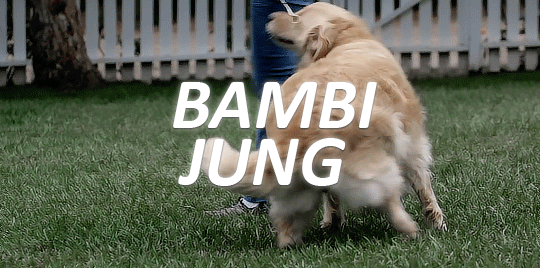
•♢ ▪ MEET THE JUNG FAMILY ( + IMMEDIATE )
as stated in my intro, the jungs were known worldwide as renowned physicians who would end up owning and funding hospitals all across the world, thus establishing the name JUNG. they’re a household name due to their impact in the medical world, if you hear the name JUNG - you know that their family is tied deep with their hospitality around the world and their influence spoke magnitude. the jung’s are no stranger to the media either, whether it’s on PAGE 6, TMZ, VOGUE or COSMO - their efforts, their style and their lives don’t go unnoticed by the media or the world; all eyes on them. their influence is unmatched; their list of connections are endless. knowing them is a blessing and a curse, depending which jung you knew!
ELIZABETH JUNG - MOTHER
ah.. miss elizabeth .. liz .. lizabeth, or as sebastian likes to say to her face - waste of space taking the role of ‘mother’ when she lacks motherly love. he and his mother DO not get along, at all - since the dawn of time, even upon birth he just never vibed with his mom - he can smell the fake from miles away. his mom was always someone who put on a different face but acted completely different in private - in short, his mother is ruthless that puts on a kind mask to the public. sebastian took it from her to be as he is, uncaring, disregards others and thanks to her - his true colors are his true colors. growing up, all they ever did was argue - but god, never in front of silvia. there was no mother son relationship, he felt like a stranger in his own home with her around.... i think they’ve gone to therapy together but you know how the story goes.... look where they are now. ever since elizabeth murdered his uncle when he was a teenager all his suspicions growing up about her lacking any empathy and only gave a fuck about money, it was evident in her life style in her mannerism and the way she spoke down to others (where do you think he gets it from?); after seeing her for what she is, sebastian’s relationship with his mother is non existent from 19 onwards, on paper he is her son but now in public he was nothing to do with her.u kno ? killing ur mother in ur head when ur 13 does wonders and then killing her again at 19 also does wonders this is y i say no matter what the elites say .. it doesnt hurt bc his mom has called him everything in the book that nothing hurts or phases him anymore, no wound cuts deeper than not having a motherly figure
RICHARD JUNG - FATHER
ah.. richie rich, dick jung ! anyway, richard is the kinder of the couple - hard working, driven, full of love and just everything elizabeth isn’t. i imagine that richard actually loved being a doctor and helping people out genuinely and like :( he rly loved his brother and losing him was so devastating like theres nothing like losing a twin that won’t hurt? also i think it’s funny, ellie if ur reading this, richard ran away when his brother died and silvia ran away to new zealand w him while seb and silvia died kinda funny huh? anyway, rich and sebastian had the strongest relationship like, he loved and looked up to his father. he would travel with his father to different countries to open up hospitals, attend events for reopenings or revamping whatever the case may be - sebastian saw the world in a different lense with his dad, those were his favorite memories as a teenager. he didn’t do extra shit and like immerse himself in school and establishing his name the way silvia did, he wanted to travel and see the world with his dad which is what he did and was home schooled for that reason. even tho his dad is gone and he’s trying his best to find him, richard and sebastian have a father son bond that’s strong - sebastian’s like a little kid that finds home in his father, out of everyone in the family he’s the closest thing he has to holding onto his sanity but once that was gone, he was trying not to fall apart. mans just rly wants to find his dad, his inner child is all thats left that needs someone to hold him and tell him he’s doing good , i think .. his dad could do that :/ ouch
SILVIA JUNG - TWIN
ah.. silvia... his bestie since diapers....until you know as of recently, i know i said this in my intro but he would protect silvia like his life depended on it whether she wanted it or not - minus the fact she stabbed him in the back but like him and silvia were two peas in a pod , like not ot be cheesy - she was his best friend growing up because like sebastian... never made friends, he didn’t go to school like silvia did where she had the chance to meet different groups of people and expand her views on the world, all sebastian had was her and he was okay with that? he didn’t like to make friends, and i was talking to ellie bout this but without having a motherly figure in his life - he kind of projected wanting a mothers love onto silvia because she was the closest thing to a mother figure in that house and in his life. he would want her approval, her words cut just as deep as his mother so losing her was like a mind numbing experience. he puts on a brave face to the world acting like he doesn’t care but god it hurts, it genuinely hurts to lose his twin and doesn’t understand how she could turn so cold and cruel towards him yk? he didn’t realize he was suffocating her, he was supposed to protect her but in the end they fell apart. it was supposed to be them against the world yk? like the jung twins together were always a duo in the media, never one without the other - like he cut deep with his words and she was always the timid one between them but they both share qualities that deem them what they were - powerful together but :/ ok im gna cry if i keep typing more
BAMBI - HIS DOGGOOOO, thumper’s silvia’s !
bambi is thumpers sister, the twins got these pair of golden’s when they were babies and they grew up with them and sebastian .. god .. HE loves his dog so much it’s insane, she’s his emotional support and bambi is very protective sebastian - she may be old but she has enough to run and bite people on behalf of him and it’s very fitting, she’s his dog and they’re both selective of each other, there’s nothing he wouldn’t do for his pup - she gets the best treatment a dog can get, they cuddle in his bed every night, she’s probably seen over 309435 different faces in her life time, anyway sebastian and his dog like to sit together and listen to music and she makes him happy, she knows when he’s sad and cuddles up against him and he instantly feels better
5 notes
·
View notes
Text
Duke Reviews Xtra: Bambi 2
Hello, I'm Andrew Leduc And Welcome To Duke Reviews Xtra Where We Are Continuing Our Look At Disney...
youtube
And Last Sunday On Duke Reviews, I Reviewed Walt Disney's 5th Animated Classic, Bambi, So I Figure Why Not Look At The Direct To DVD Sequel, Bambi 2...
This Sequel Which Is More Like A Midquel Than A Sequel, Sees The Great Prince Of The Forest Taking Care Of Bambi After The Death Of His Mother Done By....
youtube
(Start At 0:04)
It Also Shows Bambi Trying To Earn His Father's Love For Him..
Will Bambi Succeed?
Let's Find Out As We Watch Bambi 2...
This Film Starts Immediately After Bambi's Mother Has Been Killed By...You Know Who...And The Great Prince Of The Forest (Voiced By Patrick Stewart) Is Taking Bambi (Voiced By...Nemo?) Home To Get Some Rest While He Talks With Friend Owl About Finding A Doe To Raise Bambi...
But Telling The Prince That As The Does Can Barely Feed Themselves Right Now, He Must Take Care Of Bambi At Least Until Winter Ends...
(Great Prince) Okay, But From Now On I'm Calling Him Number One Instead Of Bambi...

As We Get A Title Card, We Also Get Our First Song By Alison Krauss Called There Is Life...
youtube
(Start At 0:33, End At 2:25)
And It's Okay
It's Not Bad But It's Just How I Feel About All The Songs In This Movie, They're Just Okay But Nothing Spectacular...
Anyway, Some Time Later, The Great Prince Allows Bambi To Be With Thumper And Flower At The Groundhog Ceremony Where They Meet Up With Faline To See If They Have Six More Weeks Of Winter Or If They'll Have An Early Spring...
Coaxed Out Of His Hole, The Groundhog Doesn't See His Shadow But Is Scared Back Into His Hole By Ronno, Who Tries To Impress Faline With His Tales Of His Encounter With Man, But When Bambi Doesn't Believe Him, Ronno Attempts To Fight Bambi Only To Be Called Away By His Mom...
As The Others Leave, Bambi Falls Asleep While Waiting For His Dad But When Bambi Hears What He Thinks To Be His Mom's Voice On The Meadow, It Turns Out That...

Set By Man. But Luckily The Great Prince Comes To Bambi's Rescue And The Both Of Them Escape, However, Bambi Is Yelled At By The Great Prince For Endangering Himself...
Days Later, Bambi Informs Thumper And Flower About His Wish To Impress His Father So They Decide To Teach Him To Be Brave...
youtube
(Start At 0:24)
However, While Doing So, They Encounter A Crotchety Old Porcupine Who Sticks His Quills Into Bambi's Backside. Hearing The Commotion, Faline And Ronno Investigate...
Seeing Ronno Bothering Faline, Bambi Gets Into A Fight With Him, Which Leads Ronno To Chase Bambi And Thumper Through The Forest Until Bambi Leaps Over A Large Ravine To Safety. Having Seen The Whole Thing, The Great Prince Is Impressed At The Feat While Ronno Tries To Do The Same Thing Only To Land Face First In Mud...

The Next Day, Thumper Encourages Bambi To Talk With The Great Prince And The 2 End Up Connecting Which Leads The Great Prince To Allow Bambi To Join Him On Patrol...
youtube
(Start At 0:15)
However As Father And Son Bond, Friend Owl Arrives With Mena, A Doe Who Has Been Selected As Bambi's New Mother, Realizing That The Great Prince Had Planned On Sending Him Away, Bambi Snaps At His Father...
With The Great Prince Concluding That He Is Not Meant To Raise Bambi, Bambi Leaves With Mena. But On The Way To Mena's Den, Ronno Shows Up To Taunt Bambi Again Which Leads The 2 To Get In Another Fight, That Causes Mena To Fall Into One Of Man's Traps..,

As Bambi Leads Man's Dogs Away From Mena, The Great Prince Arrives To Save Her..
youtube
But As The Great Prince Calls For Bambi, He Jumps Over To His Father Only To Fall To His Apparent Death...
With Everyone Grieving The Death Of The Young Prince They Soon Discover That...Yeah, Bambi's Alive..
So Bambi And The Great Prince Reconcile As A Few Days Later, Thumper Tells His Side Of The Chase To His Friends As Bambi Arrives With His Antlers Starting To Come In Nicely...
With Ronno Saying "Ill Get You Next Time, Bambi, Next Time!" Only To Be Bitten On The Nose By A Turtle, Bambi Meets Up With The Great Prince Who Takes Him Someplace Special..,
youtube
(Start At 1:41)
And That's Bambi 2, And Is It Bad For Me To Say I Like This Better Than The Original Bambi?
The Story Is Very Touching And I Love It To The Point That A Few Scenes Almost Made Me Cry, Alot Of People Hate The Disney Direct To DVD Sequels But Take My Word For It That This One Is Not One Of The Bad Ones Either Way I Say See It...
Be Sure To Tune In Next Week As We Look At Both A Goofy Movie And It's Sequel, An Extremely Goofy Movie, But Till Then, This Is Duke, Signing Off...
2 notes
·
View notes
Text
Bambi and thumper james bond

#Bambi and thumper james bond movie
#Bambi and thumper james bond professional
Blofeld dresses in drag and has his own cat doppelgängers because I guess the Blofeld clones would get lonely? It’s the right kind of funny for me, but the problem is it’s not cohesive. The Blofeld plot, meanwhile, is at the other end of the bonkers spectrum with fake Blofelds and diamond laser satellites. The initial diamond plot is grounded and not at all what we are used to seeing Bond do in these films. No, this film is in conflict with itself. This Bond appeals to us sleazy Americans, and that’s good enough to build a setting around. Fleming writes a stronger gentleman, but the Bond we see on film has the snobbery of class but all of the crooked smiles of anybody playing craps. The American gambling capital may have glitz and glamor, but Bond was meant to be classier than the phony opulence of Nevada. I talked it over with one of my Double-O pals and he thought Vegas was an inappropriate setting for Bond. This is a film that really fails in its script. Pussy Galore is more dignified than that. Plenty O’Toole is probably the most unfortunate name for anyone ever. I think You Only Live Twice had stronger pacing, but my verdict is going to have to be this is better than Thunderball, but not by much. Diamonds isn’t boring and I don’t think it’s necessarily more offensive than a standard Bond film. YOLT was actually really exciting but had bad dialogue and questionable racial themes. I think the big problem with Thunderball was it was really boring. We’ve seen some bad ones, and the contenders here are Thunderball (1965) and You Only Live Twice(1967). To many, this is definitively the worst Connery Bond.
#Bambi and thumper james bond movie
So ranking this movie makes or breaks a Bond opinion. Another joke about diamonds, end credits. They’re attacked by Wint and Kidd one more time, but Bond kills them. Bond takes a crane and throws Blofeld’s escape pod around for fun.įinally, Bond and Case are on a cruise to go back to Britain. The CIA and Whyte attack the base with helicopters and eventually Blofeld is on the run. When Bond gets there, he switches the activation tape out but Case screws that up. It is, but Case is kidnapped and Blofeld seems to hold all the cards. The focal building in all this is the Whytehouse, which is a casino owned and operated by a reclusive Howard Hughes analog named Willard Whyte. We’re going to ignore all that and just say eventually Case figures out Franks is really Bond and joins his side to cooperate with the investigation and not go to prison or die. Kidd kill diamond smugglers and take their diamonds, and Bond escapes death and gets ambushed multiple times because the CIA has given him fake diamonds. They sneak the diamonds onto the real Franks’s body (whom Case thinks is Bond) and go to Vegas for delivery.
#Bambi and thumper james bond professional
He meets smuggler Tiffany Case under the guise of professional smuggler and assassin Peter Franks. They put Bond on the case and send him to Amsterdam. Someone is stockpiling South African diamonds and Britain wants to know how. He tracks him down in a facility dedicated to creating Blofeld doppelgängers and drowns him in weird molding goo. The end of OHMSS is mostly ignored, but Bond is nevertheless hellbent on finding Blofeld. If you don’t want to read too much into this review, basically: it’s another comedy, every previous cliché is not forgotten, and people need to be careful what they wish for. The fear of alienating the giant, international audience of the first few films meant another On Her Majesty’s Secret Service (we’re just going to call it OHMSS for short now) was not going to be in the cards any time soon. The new decade could have promised more of a change for Bond, but it didn’t. Out of the sixties and into the hellfire that is the seventies. Yet I’m strangely compelled to comment on the tie. Okay, this is my last chance to make fun of Sean.

1 note
·
View note
Text
Duke Reviews: Bambi
Hello, I'm Andrew Leduc And Welcome To Duke Reviews, Where We Are Continuing Our Look At Disney...
youtube
By Talking About Disney's 5th Animated Feature, Bambi...
This Film Is About A Fawn Named Bambi Learning To Grow Up In The Forest After His Mom Is Shot By...
youtube
So, With That Joke Aside, Let's Dive Into Bambi..
The Film Starts With Our First Song, Called Love Is A Song By Donald Novis, Who While Remembered For This Song, He Is Also Remembered For His Role At The Golden Horseshoe At Disneyland...
youtube
(End At 1:19)
And It Is A Good Song, I Love The Way Novis Sings It The Guy Is A Good Singer...
After The Credits Finish, We Meet A Doe Who Has Just Given Birth To A Fawn Named Bambi, Who Will One Day Take Over The Position Of Great Prince Of The Forest, A Title Currently Held By Bambi's Father, Who Guards The Woodland Creatures Against The Dangers Of Hunters...
Bambi Is Quickly Befriended By An Eager And Energetic Rabbit Named Thumper Who Teaches Him To Walk And Speak...
Yeah And Later In Life They Both Would Fight James Bond...Oh Wait That's A Different Bambi And Thumper, My Mistake!

But While Bambi Spends Most Of His Time With His Mom, He Does Make Other Friends Including A Skunk Called Flower And A Female Fawn Named Faline After We Get Our Next Song ...
youtube
And I Have A Story To Tell...
When I Was A Toddler I Did Not Want To Take A Bath For All The Tea In China, I Hated Baths To The Point That I Would Scream And Yell Bloody Murder So Much My Grandmother Heard My Screams From Her Apartment...
But The Only Song That Ever Calmed Me Down Whenever I Took A Bath Was This Song And It Is An Interesting Song Despite It Being Short...
Curious And Inquisitive, Bambi Asks Questions About The World Around Him...
Well, Isn't He A Regular Forky...

While Being Cautioned About The Dangers Of Life As A Forest Creature By His Mom. One Day In The Meadow, Bambi Briefly Sees The Great Prince, Not Realizing That He Is His Father...

Ok, We're Not Going Into That Bit...
Going Uphill, The Great Prince Discovers The Human Hunter Called Man. With All The Animals Running Down The Meadow To Get Everyone To Safety, Bambi Gets Separated From His Mom But Is Escorted Back To Her By The Great Prince...

During Bambi's First Winter, Him And Thumper Play In The Snow While Flower Hibernates...
youtube
(Start At 1:00, End At 3:32)
One Day, His Mother Takes Him Out To Go Find Food When Man Shows Up Again...
youtube
(Start At 0:26)
Taking Pity On His Abandoned Son, The Great Prince Leads Bambi Home As He Reveals That His Mother Cannot Be With Him Anymore And That He Is His Father...

Okay, Enough Of That!
This Leads Into Our Next Song...
youtube
It's Good Despite Only Being There To Calm People Down After...You Know...
As Years Later. Bambi Has Grown Into A Young Stag And Both Thumper And Flower Have Also Entered Young Adulthood. Warned About Twitterpation By Their Advisor, Friend Owl, The Trio Of Friends View The Concept Of Romance With Scorn...
Only For Thumper And Flower To Fall In Love With A Female Of Their Species Before Bambi Falls For Faline...
But Their Courtship Is Soon Challenged By An Older Stag Named Ronno Who Attempts To Force Faline Away From Bambi...
youtube
(Start At 0:33)
Awakened By The Smell Of Smoke, Bambi Follows It Only For It To Lead To A Hunter Camp. Warned By His Father That Man Has Returned With More Hunters. Bambi And The Great Prince Flee To Safety Only For Bambi To Separated From Faline Which Leads Bambi To Search For Her...
He Soon Finds Her Cornered By Man's Dogs Which Bambi Wards Off. But At Man's Camp...
Doesn't That Sound Like Something Tim Allen Would Make On Home Improvement? You've Heard Of The Man's Bathroom, You've Seen The Man's Kitchen And You've Even Been In The Man's Bedroom, Now To See How Men Camp With The Man's Camp!
As I Was Saying At Man's Camp, Their Campfire Suddenly Spreads Throughout The Forest Resulting In A Wildfire That Forces All The Forest Creatures Including Bambi And His Friends To A Shelter On The Riverbank...
Next Spring, Faline Gives Birth To Twins Under Bambi's Watchful Eye As The New Great Prince Of The Forest...
And That's Bambi And It's Okay...
Don't Get Me Wrong The Animation In It Is Great, It's Just Not One Of My Favorite Disney Animated Classics, I Get Why Everyone Likes It But I Don't Know, I Mean I Don't Even Cry At Bambi's Mom's Death And That's One Of The Saddest Deaths In Disney Movie History...
If You Like It, Great I'm Glad You Do But For Me I'm Giving It A Skip...
Be Sure To Visit Duke Reviews Xtra This Week As We Look At Bambi 2, Till Then, This Is Duke, Signing Off...
0 notes
Text
The Art of Storytelling - You are a Storyteller
Note taking made during the Pixar lessons for the ‘art of storytelling’. A lot of the content retraces the information we’ve already been told, but from the perspective of someone in the animated film industry.
I myself am more interested in animated television, but I thought that working through this might be helpful.
https://www.khanacademy.org/partner-content/pixar/storytelling
(These notes were typed up originally on a word document so it’ll be messier here than where it was first typed up. I haven’t done all of the activities, but did the majority).
Character Story Structure Visual Language Film Grammar Pitching and Feedback
Why do you think you connected with these stories? Come up with at least one reason for each. What, if anything, do these three films have in common? How are they different? Three favourite movies - How to Train your Dragon: This film is about a human and a dragon becoming friends despite all odds, both of them being disadvantaged in some way. I think I was drawn in by the visuals first of all, but later it was the work that the characters put into their friendship. For me personally, I think it was the close bond the characters formed, because at the time of watching I didn’t have this and perhaps desired it. - Tangled: This is a retelling of the fairy tale ‘Rapunzel’. Rapunzel has a dream but is held back by her ‘mother’, and works with a rogue to achieve more than she anticipated. This film has a strong sense of passion for a goal and doing whatever it takes to achieve it, which is an idealistic desire I share with it. It also had a believable and cute romance shush. - Bambi: This older film follows a baby deer growing up and becoming the great prince to replace his father. Throughout the film Bambi endures happiness and hard times, a more realistic look at life despite the age rating, and as a child I think I could relate to this. It also had a minor theme of saving the forest / environment, something we learned a lot about at that age and fervently supported. These 3 films are all visually appealing and were obviously able to grab and hold my attention, and are definitely part of the reason I come back to watch them again. They all feature a character that feels lost and alone for at least one section of the film, before growing into more of a unit with friends and family.
‘What if’ questions How to train your dragon: What if dragons were real? Tangled: What if the princess was the hero? Bambi: What if deer lived in the forest?
What if fairies were real?
What if cats could talk?
What if magic was real?
What if the clouds were dying?
What if earthquakes happened every week?
Part A: Return to your 3 films. Identify the worlds and characters in each. Write these down.
Who are the main characters? - Hiccup and Toothless - Rapunzel and Flynn Rider (Pascal and Max) - Bambi, Bambi’s Mother, Thumper
Is there a character you identify with most? - Hiccup, he doesn’t fit in with the others but finds his way through his hobbies. - Rapunzel, she’s ‘trapped’ in one way or another, and her arc involves a strong theme of achieving her dreams. - Bambi, due to the amount of responsibility that was put on him so young.
Where does the movie take place? Is it one world or multiple worlds? - How to train your dragon takes place in a single world on a single viking island, in a more medieval era. - Tangled takes place in a small section of a medieval kingdom, between a hidden tower and a bustling fantastical city. - Bambi fully takes place in a woodland forest, in an era where humans have gunpowder.
Part B: Try mixing a character and world from different movies. Try this a few times and see what happens. - Hiccup in a woodland forest, modern(ish) era. Without the magical element of the dragons, Hiccup might have been in the same boat as he was at the start of his own film. Having a similar threat (as the humans are to Bambi) may be the same as the dragons, however, and perhaps he would try to stop the conflict by communicating with them. - Rapunzel on a viking island inhabited by dragons. It’s likely that due to Rapunzel’s nature she would have wanted to befriend the dragons, much like Hiccup was inclined to do. - Bambi in a fantastical world. Bambi’s story would have most likely been less tragic in these circumstances, as animals are seen as more humanoid to the characters. Perhaps he would have had the support of humans instead of them being a constant threat.
Part C: Return to your three "what if" statements from the previous exercises. Pick your favorite one. Can you imagine a possible character and world? (Optional) Draw or write about what life would be like in this world. What if the clouds were dying? The main character may rely on the clouds for their survival, for water, or maybe they’re something insignificant that only the main character seems to care about. I think I would want to go for the character living within a larger population, and they are the only one that seems to notice the clouds and their usefulness. This would be a child character trying to warn the adults that something has changed in the clouds, and that it’s a bad sign for future harvests / their survival. None of the adults seem to take much heed however, but the main character feels stuck. They meet someone who agrees with their hypothesis and gives them something magical in order to start their journey, which will involve a lot of time in the sky. Perhaps there are cities in the sky that no one can see from the ground that she gets to explore.
Always remember your initial feeling / idea when you’re refining something.
Something that might affect you might not affect someone else in the same way, you need to find a way to get in touch with the whole audience’s emotions.
Elevator Test: Put the character into an elevator and trap them there, see how they would react in a crisis.
Step 1: Pick a character from one of your favorite films. How would they respond to being trapped in an elevator? Draw or write a single page about what happens. Rapunzel: She would be quite calm and logical in this situation and would be keen to find a way out.
Step 2: Return to a character you are in the process of creating and do the same thing. Juniper: She would try to be calm but the situation of something not going exactly to plan would put her on edge. She would try to quickly find a way the fix the problem (pushing buttons, tapping the door to try and activate the missing mechanism etc), and if this didn’t work she would then start to panic.
You want to be able to imagine the character in any situation and know what they would do / how they would react.
External features, internal features. Sometimes external features can suggest internal features when you’re designing the character’s personality.
‘Characters have to come from authentic human emotions and experiences’, being based on real people that you know personally. These are things that are hard to make up on your own, especially to make them believable and relatable.
External Features: Long blonde hair, fantasy-like purple dress, energetic stance. Internal Features: Naivety, optimism, curiosity
External Features: Thin, rough and dated clothing, long face Internal Features: Smart, inventive, stubborn
External Features: Large head, large eyes, spindley but flexible form Internal Features: Curious, energetic, cautious
Return to one of your character ideas from the last lesson. Brainstorm some possible answers to the following questions (Aeli)
Is your character a human, animal, object? - Human, but with some Fae DNA that gives her magical properties.
What kind of clothing do they wear? - A large celtic poncho/cloak, leggings
How does your character move? - Without much grace, much like a child playing in a playground, but graceful to an extent when using her powers.
What's the first thing you'd notice when looking at them from a distance? - The conflicting colours between her cloak and hair, as well as the weird shape of her hair.
Internal features:
What do they like to do? - To explore and to push her boundaries, climbing trees and talking to new people.
What do they fear? - Disagreements, as these often lead to shouting which she is fervently afraid of.
What emotion do they most often feel? - She’s usually happy, and goes with this emotion, allowing it to motivate a lot of her actions until they get received badly. Her second most frequent emotion is sulky anger.
How would they respond if trapped in an elevator? - She might try to attack the elevator, hoping it’ll just know what to do.
What does your character WANT? It’s the most important thing about a character, it pushes the story.
They will NEED to do something in order to be fulfilled or happy, this will be a conflict within the character - what they want and need.
The NEED is the emotional heart of the story, what the audience will remember afterwards.
Rapunzel: She wants to see the lanterns, but ends up needing the connection with Eugene (this leads her to also ‘needing’ to find out who her true parents are). Hiccup: He wants to fit in with his people and make his dad proud, but needs to instead revolutionise them, doing the exact opposite of fitting in. Bambi: Bambi wants his carefree life, but ends up needing to grow into the great prince he was born to be. (?)
I want to make a cartoon of my own, but I first need to approach my own independence and see how far I am able to push it in order to accomplish this goal. Perhaps I ‘need’ to work on someone else's project?
What do they want most? - Aeli most wants the power that she sees Juniper have, and the freedom it must grant.
Who do they want to become? - Someone who people look up to, who can solve any problem.
What might they need in order to succeed? - She needs to realise that not everything is black and white, good or bad, and that some situations are more difficult than others to solve.
What’s the best way to get a character to realise what they need to accomplish?
Force your character to react, what choice would they make and how would that obstacle reflect their character?
Rapunzel: Mother Gothel, her hold on Rapunzel emotionally and later in the movie, physically. Hiccup: His father, who disagrees with him ideologically and later takes control from him - taking his dragon. Bambi: Bambi’s mother dying, as this means his ‘safety net’ is gone and he needs to learn to fend for himself. My parents splitting up meant financial and emotional instability for me growing up, which proved to be an obstacle when it came to doing what children ‘should’ be doing, like school trips, playdates, parties etc.
Aeli is in a world where she has power but is not nearly as strong as those around her. If someone disagrees with her and decides to use brute force to get their way, there’s not much she can do to stop them. Another obstacle is just how naive she is to the world she is really in, and she needs that knowledge to accomplish her goals.
Character, obstacle, goal. Obstacles change the character as their arc continues, before they reach their goal.
The character is formed as the story continues, they develop as it progresses.
If you get something for nothing, you won’t value it, it’s the same for the character.
Rapunzel: She wants to see the lanterns in the beginning, and realises that she instead needs to make connections with people like Eugene and pursue the outer world. Hiccup: He starts the film wanting to fit in with his village, and realises that no, he needs to flip their beliefs on their head for the good of their future - he had to ostracize himself. Being less ‘spoiled’ with financial gain, I find it easier to do without certain things, and learn to do my best to be prepared for the worst financially. Aeli starts her story wanting to be strong enough to essentially get her way, but as she proceeds she learns that what she wants isn’t always right, and there are many ‘right’ ways of doing things. She’ll still fight for what she believes in, but won’t force it on others if she sees there could be another way.
Why do we care? What’s at risk if the characters fail - if the stakes are low the film won’t be very entertaining.
Early in the arc the stakes might not be too extreme, but as it progresses it might get more and more important that the character wins.
The stakes should be very important to the character, it should be the world to them.
Externals stakes - physically what will happen to the character or the world?
Internal stakes - what’s the character feeling emotionally or mentally? What do they care about, what will happen to them internally?
Philosophical stakes - the values of the belief system of the world (if Frodo doesn’t throw the ring into the fire, the world will be under the control of evil forever). Good vs evil, greed vs generosity etc. Underlying ideas or values.
Rapunzel: When she was back in the tower, Rapunzel figured out that she was the lost princess, and had to make the decision to blame Gothel, which would make her hostile and would result in Rapunzel being imprisoned more forcefully than before, and Eugene’s ‘death’. This would be a physical stake, perhaps also internal as it puts Rapunzel under a lot of emotional distress. Hiccup: When fighting the ‘alpha’ dragon, Hiccup had to decide to lead the threat away from everyone else, sacrificing his and Toothless’ safety in the process. He lost his leg because of this. This would have been a physical stake, and perhaps a philosophical stake as it changes the vikings’ view on dragons forever.
Aeli needs to choose to pursue what she thinks is right, in comparison to what her family says is right. She holds the power and the people she loves find her almost terrifying, and she needs to put her own desires aside for their sake. The relationships she has are at stake in this situation, as well as her safety. This is a physical stake, but could also count as an internal one, as her stubbornness and pride are pulled into question. Perhaps it could even be philosophical due to the decision being one that many people make at some point in their life, but it doesn’t reflect the world very much.
What do you want the audience to know, and when? Introduction, buildup and pay off, it’s important to get the order right otherwise it won’t have an impactful affect.
Structure can affect how the audience reacts.
The structure of the story is the most important part, before you start to work on dialogue and the extra bits. It’s the concrete foundation of the story, and needs to be solid before adding anything to it.
Story beats: the most important parts of your story. Don’t get into a detailed plot, but identify if the protagonist is making a decision that’s important, and if it could affect the rest of the plot. (Buzz lightyear looking at the rows of toys like him and realising that there’s more like him, this would quantify as a story beat).
Story spine: ‘once upon a time, every day, until one day, because of this, because of that, because of that, until finally, ever since then…’
Choose a format (outline form, using index cards, sketchbook, etc.) to identify and describe the beats that are part of the structure in each of your three favorite films
How to train your Dragon:
Beginning:
Once upon a time - there was a viking boy who lived on an island.
Every day - Dragons would attack, and he wouldn’t be able to help.
Until one day - He shot down a Nightfury.
Middle:
Because of this - He learned he couldn’t hurt dragons, even though it’s what he wanted at first. Because of this - He trained and became friends with the dragon. Because of this - the vikings found out about his dragon and took him away.
End:
Until finally - The boy’s dad accepts him.
Ever since then - The vikings became friends with the dragons, and they respect the boy.
Tangled:
Beginning:
Once upon a time - A princess was kidnapped for her magical hair.
Every day - She sat in her tower, never leaving but wanting to go.
Until one day - A thief breaks into her tower, giving her the opportunity to leave.
Middle:
Because of this - She became close to the thief.
Because of this - She comes to the kingdom and learns about the lost princess.
Because of this - When the thief is framed to have left her, she goes back home with her mother.
End;
Until finally - She realises that she was the lost princess and rebels against her captor.
Ever since then - She’s lived in the kingdom with the thief.
What are you trying to say in your story?
The theme is connected to the moral, this is what your character learns by the end of the story.
Something without a core idea or theme is quite unmemorable - it needs this so that if the audience tries to refer back to it, they can simply summarise the theme.
Finding out what the protagonist needs is often the theme of the production.
It’s important to know the theme or moral before you start the story, although this can develop as you work on this. You don’t need to start with a theme, but you need it to be clear before the story is finished.
Part A: Describe the moral or theme of your three favorite films. Can you identify the lesson that the main character(s) learns by the end of the film?
HTTYD: Accept people for their differences.
Tangled: Follow your dreams.
Part B: Think of a story from your own life. What was the moral of your story? What did you learn and why?
Throughout secondary school I thought there were certain things I could / couldn’t do due to a ‘status’ I perceived myself to have. As I grew up I realised that anyone can do whatever, no one cares. So the moral would be along those lines - be an individual.
Part C: Return to the story you are developing and try the following:
Brainstorm ideas for the moral in your own story (return to the needs of your main character from the Character lesson) Aeli needs to learn throughout her story that not every problem has a black and white answer, and this can encompass a few morals. Perhaps the core one is to ‘accept people for their differences’, or to ‘think about others’. She’s a child so it’ll be something simple at first.
Most common film structure is the 3 act structure - beginning, middle and end.
Act 1: We find out where the story is taking place, and what type of product they’re about to watch, we see what’s normal for the characters and what’s going to set the story into motion. Can also feature an antagonist.
You meet the character and see their place in the world, and grow an affinity for them, so you want to follow them through their story.
Inciting incident - will introduce a conflict that will force the character into action. This will generally happen at the end of the first act.
Part A: Identify the First Act in your three favorite films.
Who is/are the main characters, and why do we care about them? HTTYD: Hiccup is our main character and we care about him because he is the underdog of his village, and we see his determination to succeed. We also see that he’s picked on a lot, and we sympathise. Tangled: Rapunzel is the main character and we know that she’s been kidnapped, even if she doesn’t yet know. This is already morally bad so we want her to be reunited with her parents.
Where and when does the story take place? HTTYD: On a viking island. Tangled: In a fantastical kingdom.
How do we learn what type of movie it is? HTTYD: We see that Hiccup wants to join in with fighting the dragons, but that everyone around him is discouraging, showing that this is quite like an underdog story. Tangled: We have an introductory sequence where we see baby Rapunzel being kidnapped, and we see that she’s entranced by lanterns flying every year on her birthday. We know that she wants this, even though it seems impossible.
What is the inciting incident? (how is the world disrupted?) HTTYD: Hiccup lets a Nightfury go, realising he can’t hurt the dragon. Tangled: A thief, Flynn Rider, breaks into Rapunzel’s tower.
What or who is the antagonist HTTYD: Hiccup’s dad is the main antagonist, although he’s not always seen as the ‘bad guy’. It could be argued that his dad’s ‘closed-mindedness’ is the antagonist that gets defeated in the end. Tangled: Mother Gothel, the woman who kidnapped Rapunzel in the first place.
Act 2: Progressive complications that make our characters make choices, some that are difficult for them to make.
‘Beat your character up a lot’. ‘A story with no conflict has no shape’. It’s where you see the most growth.
Act 2 shouldn’t go on and on. A series of challenges for the character, toward the ultimate ‘fork in the road’ where they have to make the most important decision.
The low point - when it seems that all hope is lost. They could have achieved everything they want, but they feel unfulfilled because they haven’t gotten what they need. Force them to confront what they didn’t want to confront in act 1.
Act 2 happens after the inciting incident. There’s often a choice that they can never come back from, or the low point.
Part A: Identify the Act 2 in your three favorite films.
What is the want/goal of the main character(s) at the start of Act 2? HTTYD: He wants to become friends with Toothless. Tangled: She wants to go to the kingdom to see the lanterns.
What (if any) is the point of no return or turning point (when the character learns something and changes their path)? HTTYD: Hiccup is pinned down by a dragon, and Toothless comes to his rescue, revealing himself to the other vikings. Tangled: Rapunzel is chased along with her new companion by palace guards?
What (if any) is the low point? HTTYD: Toothless is taken by the vikings, and they all head toward danger that he feels that he can’t save them from. Tangled: Rapunzel is taken back to the tower by her mother.
What did the character learn by the end of the second act? HTTYD: Hiccup learns to let other people in, teaching the others how to ride dragons. Tangled: Rapunzel learns her true identity, and the greed of Mother Gothel.
Act 3: We head toward the inevitable climax. The main character fears losing everything they care about. They face their ultimate test. They need to make choices they weren’t capable of making in act 1.
After the climax, the characters return to their world, but better than they were in act 1. They’ve grown and everything might seem better.
They sacrifice their wants for their needs - it’s time to demonstrate the change.
SHOW that they’ve learned something - the reason you made the story in the first place.
You don’t know how well the first and second act worked until it’s completed by act 3 - it should be satisfying.
A satisfying resolution means that the character needs to complete their emotional arc (it needs to be emotional).
Sometimes the resolution can come with a surprise / an unexpected ending.
Part A: Identify Act 3 in each of your three favorite films.
What was the crisis? HTTYD: Hiccup and Toothless defeat the large dragon, but they both fall into the flames. Tangled: Gothel chains Rapunzel up, stabs her companion and is about to take her away.
How is it resolved? HTTYD: Toothless caught and protected Hiccup, solidifying his dad’s trust in the dragons. Tangled: Eugene cuts Rapunzel’s hair, killing Gothel. Rapunzel cries and this brings Eugene back from the dead.
How does the main character demonstrate that they learned what they needed? HTTYD: Hiccup wakes up to a world where vikings and dragons are living together. Tangled: Rapunzel meets with her birth parents, becomes princess and eventually marries Eugune.
What was the theme or moral? HTTYD: To accept people for their differences. Tangled: To do what you feel is right / follow your dreams.
Was the character arc emotionally satisfying? Why or why not? HTTYD: Yes. Hiccup started the film not fitting in and wanting to be one of the proper vikings, but through his relationship with Toothless he stops caring about this, and revolutionises his original goal. Tangled: Kind of. Rapunzel does find out who she is, and follows her dreams to what she was meant to be. She loses some of her naivety from the start, but I’m not sure if she has a strong emotional arc.
Work backwards. Know where you want it to end, so you know how to set it up.
Expose yourself to as much as you can, as many stories as you can. Find a new story.
Study structure in films and tv shows, how it would typically go. You can then invent your own way, once you understand what is standard at the moment.
What is important to you? Write what you know - what you care about.
You have to be willing to tear it down and try again.
The bigger something is in a frame, the more important they are. Everything you see on screen is a choice.
Value (light or dark) can make something stand out more.
Line
Where a character looks, it’s like that’s where the audience will look.
The different thicknesses and directions of lines can suggest different things, these translate into the final film. Can suggest motion, emotion etc.
How would a line move with certain personality attributes?
Part A: How is line used to convey meaning and emotion within the frame below? Can you identify the primary direction of lines that direct your eyes to different parts of the frame?
The line of the birds beak points you toward Carl, and this is emphasised by the horizon line of the opposite cliff - it’s less prominent but adds to the effect. So we are pushed to look at Carl, and are led to look at the dog and Russell afterwards.
Part B: On a blank sheet of paper write down two different feelings that you’ve had recently (one at the bottom left, and the other at the bottom right). Visually represent the feeling on the left as a line traveling across the paper to the right. Then transform the line as it starts to take on characteristics of the feeling on the right.
Frustration
Melancholy
Part C: Create a character with just one line and give it a name and short description. Try creating additional characters using multiple lines.
Boffry: A short tempered line, but he has a soft side.
Shape
Start with primitive shapes like circles, squares and triangles - different shapes represent different traits the character may have.
Circle is friendly, triangle is active, square is reliable / robust.
More detail = more information and more emotion
Characters should be easily identifiable from their silhouette.
Using basic shapes you can plot out a scene to help tell the story. Notice how these help to draw the eye, how they suggest the character personalities in a scene. A rectangular shape around a character could suggest they feel boxed in etc.
Contrast between characters’ shapes could also suggest certain things.
Part A: Study the above image for a few minutes.
Can you locate the main shapes in this image? - Sully is a rectangular shape, Mike is a circle. They have a rectangular shape behind them, and the shadow of Boo could almost be triangular.
How does shape influence where you look and what meaning and emotion is conveyed? - Sully being the largest and most stable shape is what draws the eye immediately, and then you read the image from right to left, looking at Boo’s shadow and to Mike, following the rectangular structure of the blinds behind them.
Part B: Find a frame from one of your three favorite films. Notice how shapes are used.
What are the unique characteristics that help establish the mood and story? - Rapunzel is conformed into a rectangular shape in the background, and when we look at her we follow where she’s looking, to Pascal. He’s wearing a mini dress, so his form becomes more triangular. As he’s posing in this shot, the activeness of his shape makes sense - Rapunzel being a more stable rectangle makes her feel like more of a background image. The circular table contains the two and we focus on whatever is within that area. - Hiccup is in the foreground here, forming a strong rectangular shape in the corner, and our eyes are drawn to Toothless, the more active of the two with a more triangular shape. The scene is contained by the cliffs behind them, so we focus solely on this interaction.
On a piece of paper, draw the composition using the simple shapes. Feel free to overlay each frame and trace on top of it with a highlighter.
Part C: For your own story, identify the main shape for your main character(s).
What does the shape of the character imply? She’s mostly rectangular with a more circular head. She’s stable and friendly, and her hair has small triangular spikes that suggests her activity.
Does their shape change over time? Not much, her cloak might flow a lot behind her when she’s gliding through the air, forming more of a triangular shape.
Space
Linear perspective. Positioning vertical lines can create an illusion of depth, and changing the line density can emphasise this.
Make things smaller to appear further away etc.
One point perspective, showing depth at a single point. All the lines converge at that one point.
Force your eye to know where to look in the image.
Can make story suggestions - have a character feeling cramped in a space, or the space never seems to end etc.
Part A: Study the above image for a few moments and then answer the following questions:
How is the illusion of depth achieved? - The lines on the road leading backward, and the cars getting smaller as they stretch behind the characters. The buildings in the background also add to this, but they don’t go very far.
Are there any objects that show size differences? - The cars and the buildings.
Can you see how shapes and lines contribute to the depth of this scene?
Try answering the same questions using the frame you found from one of your favorite films. The circular table has a lot of area, taking up most of the screen so it appears mostly in the foreground. The objects in the background are much smaller than the foreground characters.
Here is a partially finished example as a reference:
Movement
Motion lines extend from an object along its line of action to suggest it’s movement.
Line of action, an imaginary line that runs down the spine of the character, it guides the pose and makes it feel more dynamic.
Motion lines don’t need to be blatant, they can be included in the background, framing the movement. This could separate the subject from the rest of the background.
Part A: What kind of movement (motion lines or line of action) is implied in the above images? Compare the role lines play in achieving a sense of movement in both.
The cars are being led in more of a direct line, leading them straight into the side of the frame as indicated by the lines. They’re moving really quickly, as demonstrated by the motion lines. The mouse has very fluid movements, having a lot of curve to his spine in his movements. He seems to move a lot slower than the cars do, the straightness of the lines in the cars indicate a lot more speed, which the curved lines of the mouse does not have. Logically a character that is so curled up wouldn’t be able to move very fast, and this comes across quite clearly.
Part B:
Find a frame from one of your three favorite films which shows movement. On a sheet of paper, swiftly sketch the line(s) of action or motion lines that provide the sense of movement in the image.
Part C:
Draw a character from your story performing different movements. Use a line of action to guide each pose.
Combine lines of action in a character with motion lines to create a scene with lots of movement from your story. Don’t be shy with your use of lines and shapes!
Tone
Adjusting the light and shadows can be another way to direct the viewer’s eyes in a scene.
Contrast is the relationship between light and dark - this can be more or less extreme.
Our eyes actively move to the point of highest contrast in a scene.
Everything in the foreground could be darker, framing the subject more clearly, etc.
Gradients can put across an emotion too.
We can also control what information gets revealed to the audience using tone.
Part A: In the above image, how is tone used to help create emphasis and direct the viewer’s eye?
What mood is conveyed? - We get the sense that the two characters are meeting in secret - the darkness framing them hides them from observers. The only light rims them slightly, the majority of their forms being in shadow, suggesting that they want to be hidden in this interaction.
What kind of contrast is used (low, higher, highest?) - There is a high amount of contrast between the lamp, the light source, and the characters in the frame, who are a lot more shadowed.
Colour
Contrasting colours can divert our attention, colours that are closer are more unified.
Different colours can demonstrate different emotions and personality traits. Different colours can solely represent different characters.
Cold & warm colours can suggest different things too.
Warmer light often represents the end of something / sunset.
Colour isn’t used very often in storyboarding, unless it puts across a different idea / point, to emphasise its importance in a scene.
Part A: In the above image, how is color used to help create emphasis and direct the viewer’s eye? What mood or emotion is conveyed? What kind of colors are used (similar, contrasting, complementary?) The character in the scene is the darkest, contrasting the light, and this is where our eye is drawn first. We then drift over the scene to the light. The colours are pale, suggesting a softness / fragility, and the colours are almost complementary, just toned down. We get the sense that it’s early in the morning, and the character is still weak and tired from sleep.
Look up storyboarders from films you like, look at their work, ask them questions relevant to that field.
Keep drawing. Look at life and draw from this.
Do a lot of quick and fast drawings with the elements of visual language, and slowly you’ll forget them and it’ll become natural.
Do really small and quick thumbnail sketches through a scene, see how it works and if it matches what you see in your head, before working on the real storyboards.
Stringing a sequence of shots together to tell a story.
Film is an emotional medium.
Framing, staging, motion, editing.
A scene defines a particular time and location - something that is happening at one point in time before moving on to another scene. It could also take place in one particular arc of the character, where they might change locations quickly but it’s focusing on this one idea.
Each scene gets broken down into minor beats, following the character throughout the scene to see what new thing they learn and how this changes them through the mini ‘arc’ of the scene.
Basic Shot Types
Common to start with a wide shot to give a broad perspective of a new environment and characters. Often followed by a medium shot, focusing more on the character.
Close up shots are good to punctuate more emotional points.
What do you want the audience to know, and what do you want them to feel?
You want a variety of shot types to put emphasis on certain plot points in a scene, to make it feel more dynamic.
Framing story points clearly is essential.
Center frame offers stability or neutrality - easy to direct attention.
Rule of thirds!
Extreme Shot
Extreme wide shots can make details difficult to see, and show a larger world.
Extreme close ups can make it much more intimate.
Up shots give a character the feeling of power or dominance.
Down shots, trapped, fear.
Plant your camera where it needs to be to sell the story beat.
Avoid extreme angles that don’t mean anything, make sure they’re where they are for a reason.
Don’t use them too much, they’re there for emphasis.
Rules can be broken as long as you understand film grammar before you do it.
Dynamic Shot
Static shots - when the camera doesn’t move.
Sense of speed, change of focus.
Pan, Dolly shot (parallel to the ground), zoom, tracking shot.
Reveal information to the audience when you want it revealed, focus on a character during an emotional speech, keep the action in the shot.
Handheld shots can give a spontaneous and unstable feeling.
Always keep the audience in mind, what you want them to feel at the time of the shot.
A moving camera brings attention to itself so you have to be careful with how much you use it.
Storyboarding
Think about what composition you might want before you start drafting (does a character need to assert more dominance in a shot, do they feel afraid etc).
What’s the dynamic between characters in your scene?
Complimentary shot - when you have an over the shoulder shot, you want to show the reverse. Show the other character’s over the shoulder, but keep the dynamic consistent (if one character takes up most of the space, keep this going).
Do rough sketches of the key points in a scene, experiment with different ways of expressing it, keeping an eye on what the composition means.
Each scene will have a ‘change’, a climax that we build to, even if it’s a small one.
Camera movements can be sketched out to emphasize the point of the scene further - to focus more on the dominant character etc.
Take the most important part of the scene and draw an image for it. This will help you move quickly through the product, letting you see what you want to focus on when you come back to fully board it.
Research how films are put together, listen to what directors say about their work and why they did what they did to build their film.
Pitch your stories early on, get feedback while you’re still able to refurbish the whole thing. You have to be willing to rethink it.
Do what you can to find out what works and what doesn’t.
When pitching, let the story unfold one idea at a time (refer to the pitch for Finding Nemo!).
You don’t have to explain every detail of your drawings, just fill in details not shown in the boards, and be descriptive with this.
Try to put yourself into the story while you pitch, if it’s an action scene it’ll move quickly, and if it’s an emotional scene it’ll be much slower.
“Make the movie feel like the movie”, don’t over explain.
Don’t just read, perform the pitch.
Giving Feedback
Listening to a pitch: Identify what the storyteller wants to say, what’s the point of the story? How do they say the lines, how this relates to the timing or energy level of a shot. How will a scene be incorporated into the bigger picture?
Performance, pacing, does it work?
Start with the positive, give specific examples of the things that you like. Know that the person worked really hard on their pitch, have a sense of respect.
Make it personal - make it clear that it’s your personal perspective. Use ‘I’ statements. You don’t know how other people will interpret anything.
Be specific, allow them to see what they can do to improve. Don’t be vague on things that they can improve.
Make suggestions, don’t dictate what you think should happen.”What were you trying to achieve with this, what were you trying to do with that” etc. Identify problems but don’t fix them.
Digesting Feedback
Try your best not to take critical feedback personally, they just want to improve the scene.
Focus on the work, not the person.
Take a step back to analyse the notes that you’ve been given.
Put some distance between you and your work, take a break from it so you can look at it objectively.
Look for the ‘spirit’ of the note, what problem is it really addressing - maybe it says that a part of the scene isn’t very clear, maybe an emotion isn’t getting across.
Storyreels
Once a pitch is approved, it moves into editing and is made into a story reel (an animatic).
Timing and sound are very important.
Start with the dialogue, and time them out. Then add the storyboards, timing these out to work with the dialogue, then you add the sound and music.
Sometimes the scene will change after being made into a story reel, and won’t have the same effect.
Cut out as much stuff as you can, shoot more stuff so you have the ability to cut it later. Try every variation of a shot, feel it out and experiment with many avenues.
Tenacious beats talent - the more you want it and the more you work toward the better.
Apply yourself to your craft as much as possible. The harder the problem, the more proud you are of the solution you come up with.
Draw for yourself, based on your inner self. Don’t draw to get a job.
Immerse yourself in different kinds of stories.
Use your experiences to write your stories.
0 notes